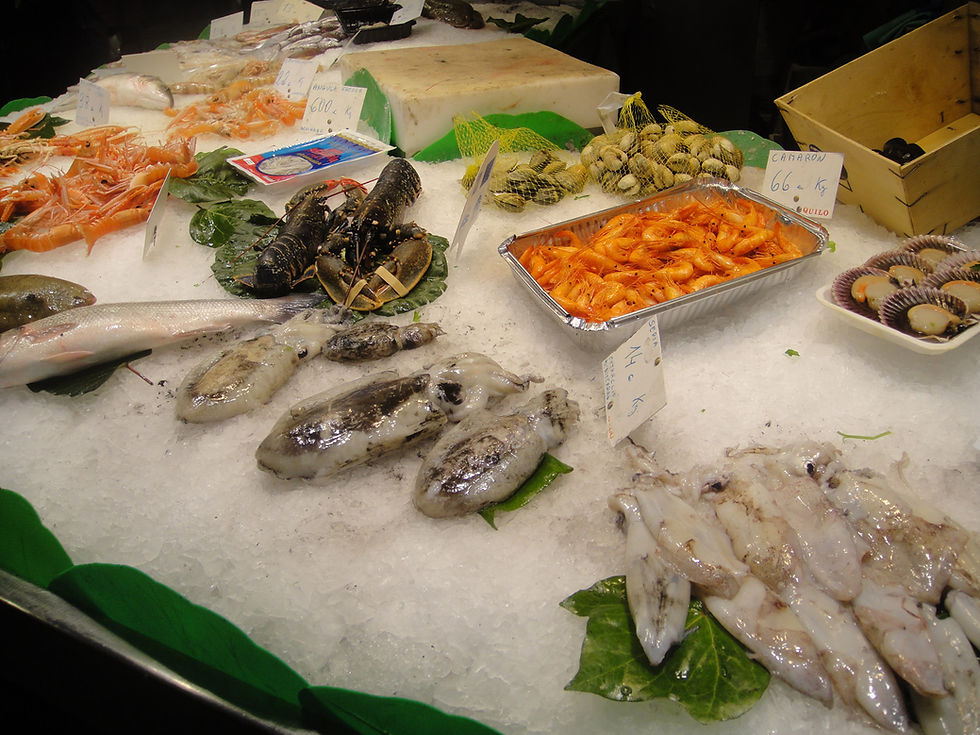
“I’ve just found out I’m allergic to nut-cases” ~Benny Bellamacina
THE BIG 8: Refers to the top eight major allergenic foods. These consist of Milk, Eggs, Crustacean Fish, Fish, Tree Nuts, Wheat, and Soybean.

Unfortunately, many of these foods can be hidden in processed or even natural foods which is why
it’s imperative to learn to read food labels and learn the alternate names of these allergens.

Milk: Reactions may stem from gastrointestinal upset (bloating, diarrhea), skin eruptions, sinus, and asthma, wheezing.Milk from other animals (goat, sheep) still contain the allergen causing proteins and one may continue to experience a reaction.
Eggs: Digestive upset, skin reactions, and respiratory and even anaphylactic reactions have been reported. The proteins that trigger reactions are located in the whites of the egg, while yolks have been reported to trigger fewer reactions. As with dairy, people with (Hen’s) egg allergies may also react to eggs from eggs from other species such as quail, duck etc.
Egg allergy can be tricky to maneuver because people need to avoid egg containing foods. Since eggs are used in everything from baked goods, to dry goods, cosmetics and even medicine, a discerning eye is important for spotting offending ingredients.

Fish: Skin and gastrointestinal reactions soon after consuming are the most common reactions, but people have reported more severe symptoms such as anaphylactic shock. White fish allergy is the most common fish which bring on a reaction.
Fish is present in other foods, often processed such as sauces, soup, toppings for pizza and flavorings for some foods.

Crustaceans: These are fish that contain a shell; lobster, crab, prawns and shrimp and scallops. Reactions include mild to severe. Anaphylaxis is the most widely known and dangerous reaction to shellfish. Other reactions are hives, gastrointestinal (vomiting, cramps, diarrhea), shortness of breath, wheezing, coughing, trouble swallowing pale or bluing of the skin.
It is imperative to know if any shellfish exists in the food being eaten with a shellfish allergy. Again, these ingredients may be in other processed foods like pizza, sauces, Asian foods, salad dressings)
Tree Nuts: In this group nuts are Chestnut, Hazelnut, Pine nut, Walnut. Some legumes and fruit are too considered to be nuts such as, Almond, Pecan, Coconut, Cashew, Peanut.
Nuts are the most reactive allergenic foods. Reactions are multi-systemic (all over the body), skin, respiratory, and fatal anaphylactic occur.
Cross-reactivity people with nut allergies is common, for example people allergic to multiple nuts. In the United States, peanut is the most common cause of nut allergy.Since reactions can occur with even minimal involvement with the offending nut (even skin contact, or inhalation), it’s Extremely important to avoid contact in every way of these nuts.

Legumes: This group includes Peanut, Chickpea, Lentil, Lupin, Pea, Soybean. Some of the most allergenic foods are within this family. The most widely known legume for reactions is the Peanut. Symptoms of peanut allergy range from local such as reactions in the mouth to dangerous and life threatening reactions
such as asthma, and anaphylaxis.

[ Don't eat the sauce! :() ]
Soybean Soy and Soybean by-products are one of the most widely used products in most processed and many natural foods and body home, and supplement products.Symptoms of soy allergy can too range from mild (oral ) to severe as in asthma, migraine and sinus related, and anaphylaxis. Soy being so prevalent in numerous products is one of the most difficult foods to avoid.
Wheat: Grains & Cereals: Included are, Barley, Corn, Oats, Rye, Wheat and Rice( Rice allergy is less common in North America and Europe but there have been reported symptoms in individuals, however rice allergies are more common in Japan).

Celiac Disease is an allergic reaction to a protein in wheat (Gluten) and wheat relatives being cousins oats and barley! Celiac’s the gut loses the ability to absorb nutrients which makes it particularly imperative for celiac’s to avoid gluten at all costs.However, many people have wheat sensitivity but are still able to absorb nutrients within the gut.

Symptoms of Gluten intolerance include: Gastrointestinal, Stomach and Digestive problems (includes gas, bloating, nausea, and cramping),
digestive issues also include (constipation, diarrhea or a combination) and IBS (Irritable Bowel Syndrome), Headaches/Migraines, worsening of Fibromyalgia, Emotional issues (such as mood swings, irritability), Neurological (dizziness, balancing issues, pain and weakness in the extremities) Fatigue especially after a meal that includes wheat/gluten. Symptoms are wide and numerous which makes is difficult to determine in individuals. It’s so important to get to know your body and the effects of foods on it.

The maze of food allergies & intolerances can be challenging and confusing, however, armed with knowledge (what I aim to help you with), patience and the mindset to realize eliminating the food enemies can bring about better health both physical and emotional, the new lifestyle ‘reordering’ is more than worth the the work. Stay tuned for my blog post on 'Hidden' food allergen ingredients and how to spot them!

[ Sometimes we make a wrong move and get knocked out- like poor Kermit! It's ok, we're making adjustments that require rebooting eating habits that have been ingrained in us for years. ]
A side note: It’s important not to berate yourself on your food journey. You won’t always get it right, you may rebel (spoken from years of experience!), you’ll get frustrated, but remember none of us is perfect. We’re all on a journey and growth comes out of mistakes and mishaps.
- - - - - - - - - - - -
Connect with Living Thru Grace on social media and continue the conversation:
www.instagram.com/LivingThruGrace
www.twitter.com/SOMAA
www.Pinterest.com/DDebi